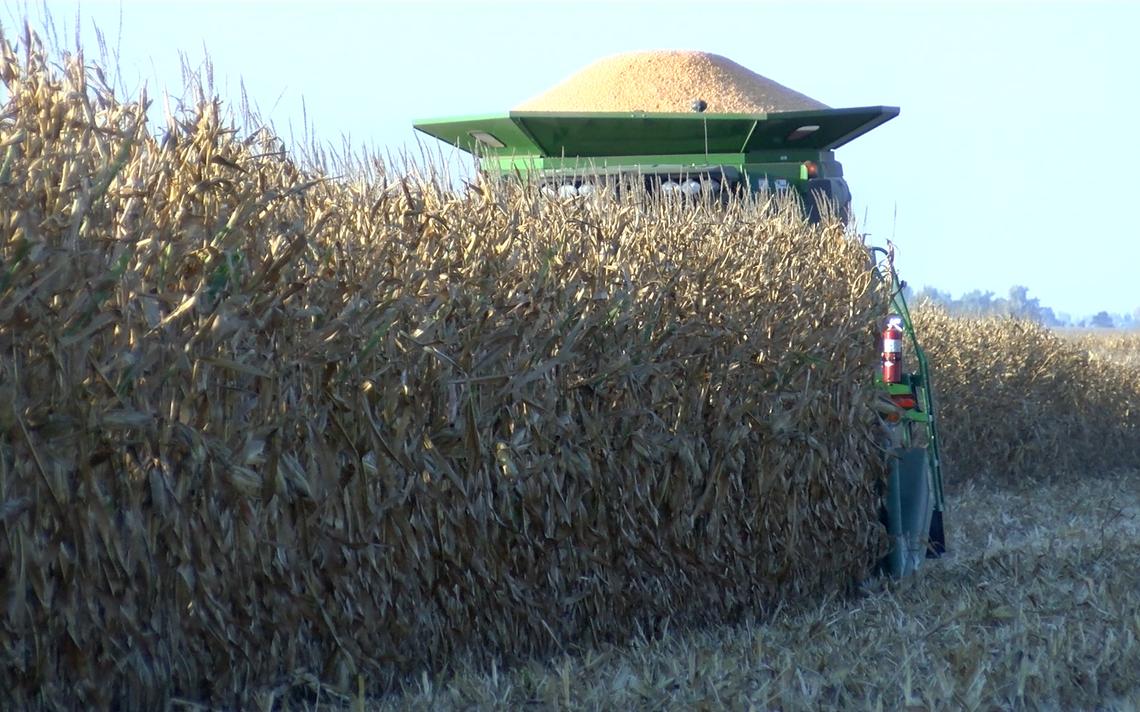Jeff Thompson farms just north of Sioux Falls near Colton, South Dakota, and he said he is seeing wide swings in corn yields within the field and from field to field due to this year’s drought. It is especially dependent on soil types, and his sandy ground has had the poorest results.
“Eighty bushels per acre to, you know, probably some of the other dryland fields will probably be, you know, 180, so kind of a wide range there. I’m just finishing up some irrigated stuff now and the yield on that’s even off,” he said.
Thompson said his irrigation system just could not keep up with the dry conditions during the season.
“Irrigation is not designed to supplement the water needs for the whole year,” he said.
Over his whole farm Thompson estimates corn yield will be down 20% from his Actual Production History
“It could be probably 75 bushels,” Thompson said. “It seems like a lot of the fields will be about right at your insurance level.”
Since he’s insured at 80%, he’s not sure if he will have a claim, and if he does it may be a small one. However, he’s hopeful that the yield, combined with higher grain prices than the harvest of 2020, will offset some of the loss.
Many agronomists say the wide yield ranges are unlike anything they’ve seen in their careers. Pioneer Field Agronomist Larry Osborne covers eastern central South Dakota and said most farmers are pleasantly surprised with corn yields with the moisture deficits they experienced. However, as they combine the corn the yield monitor may range from single digits to 200 plus bushels per acre in the same field. Osborne said how much the statewide yield will be down on corn is still unknown, but it will be at or slightly below average.
“I’ve been saying all season I thought we were going to be close to APHs with a pretty wide swing on either side,” he said.
DEKALB/Asgrow Technical Agronomist Jeff Fuhls said most corn yields have been running above the expectations producers had at the end of the growing season. He said the hybrids bred for stress are really shining this year.
“It goes to show you the advancements in breeding and just how far the genetics have come in recent years,” he said.
Fuhls said soil type also made a huge difference in production, and the sand, silt and clay soils are not performing as well as the better soils.
The test weights have been remarkably good, according to Thompson, at around 56 pounds per bushel, even on the crop that was damaged. While corn has been remarkably healthy Osborne said there are some drought-related diseases that are popping up in pockets of the state and causing standability issues, along with, of course, the wind. He said the heat in June and dry soils did not allow the corn roots to go down and get the potassium in the soil and some roots even burned up. That has resulted in nutrient deficiency and diseases like red root rot are making the stalks weak.
“Corn plants generally take up half to three-quarters of the potassium in June, and the stress this year made that a challenge,” Osborne said.
Additionally, due to the drought many farmers left fungicides out of their agronomic plans, which was a mistake.
Fuhls concurs that crown rots, but especially fusarium crown rot, are prevalent in pockets of the state this growing season.
“Corn can generally handle one stress, but compiling drought, heat, nutrient deficiencies and even compaction on the plant has led to some disease issues in spots,” he said.
Thompson is seeing stalk integrity issues in his corn and as a result he combined those fields early to try to minimize harvest loss. However, that corn was slightly wet and had to be dried, and the higher drying costs cut into his profit. Otherwise, he said corn moisture levels are relatively dry, running from 15% to 19%. Right now, he is storing that grain and hoping for better prices this winter.
Helping People Succeed Financially. We see every customer as an individual and treat our customers’ businesses as our own. Our dedicated, experienced staff is there for our customers on every step of their journey.






